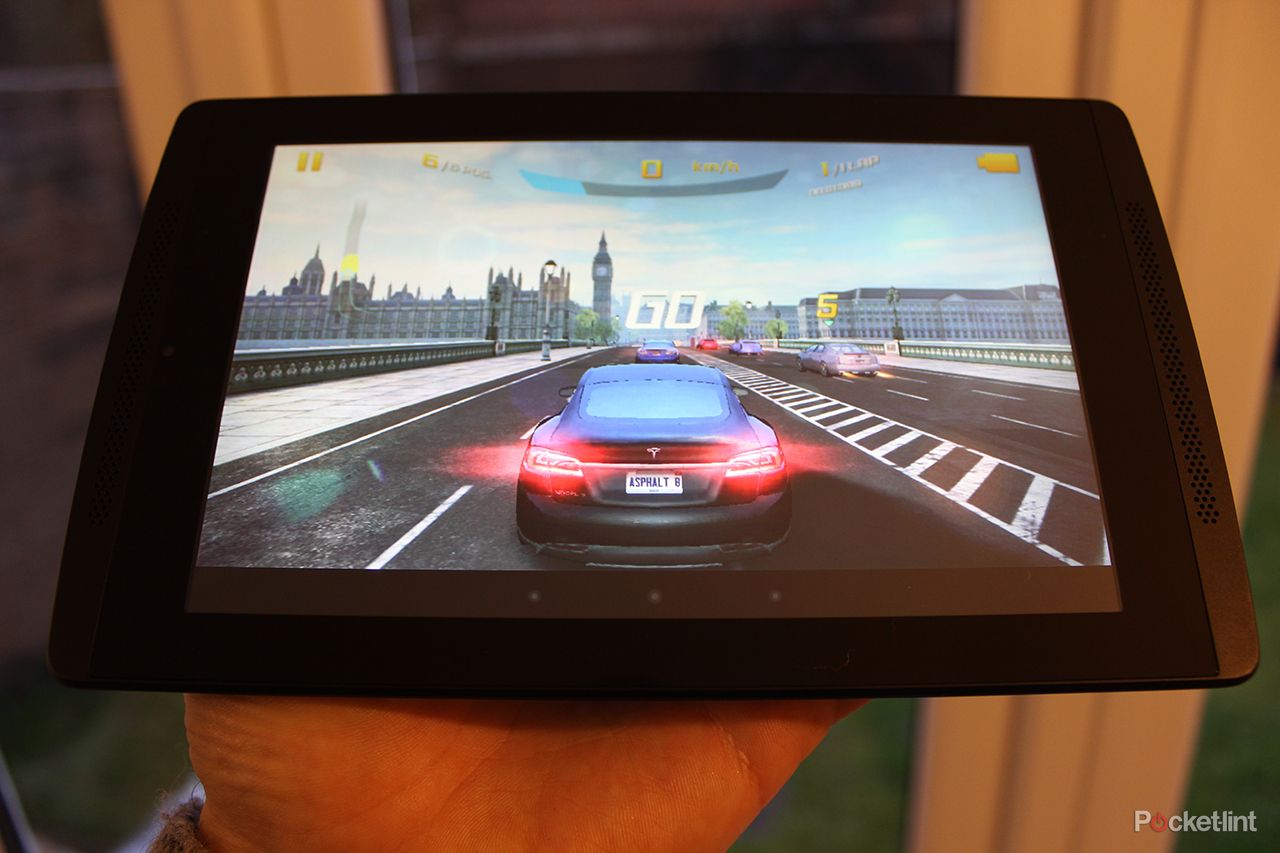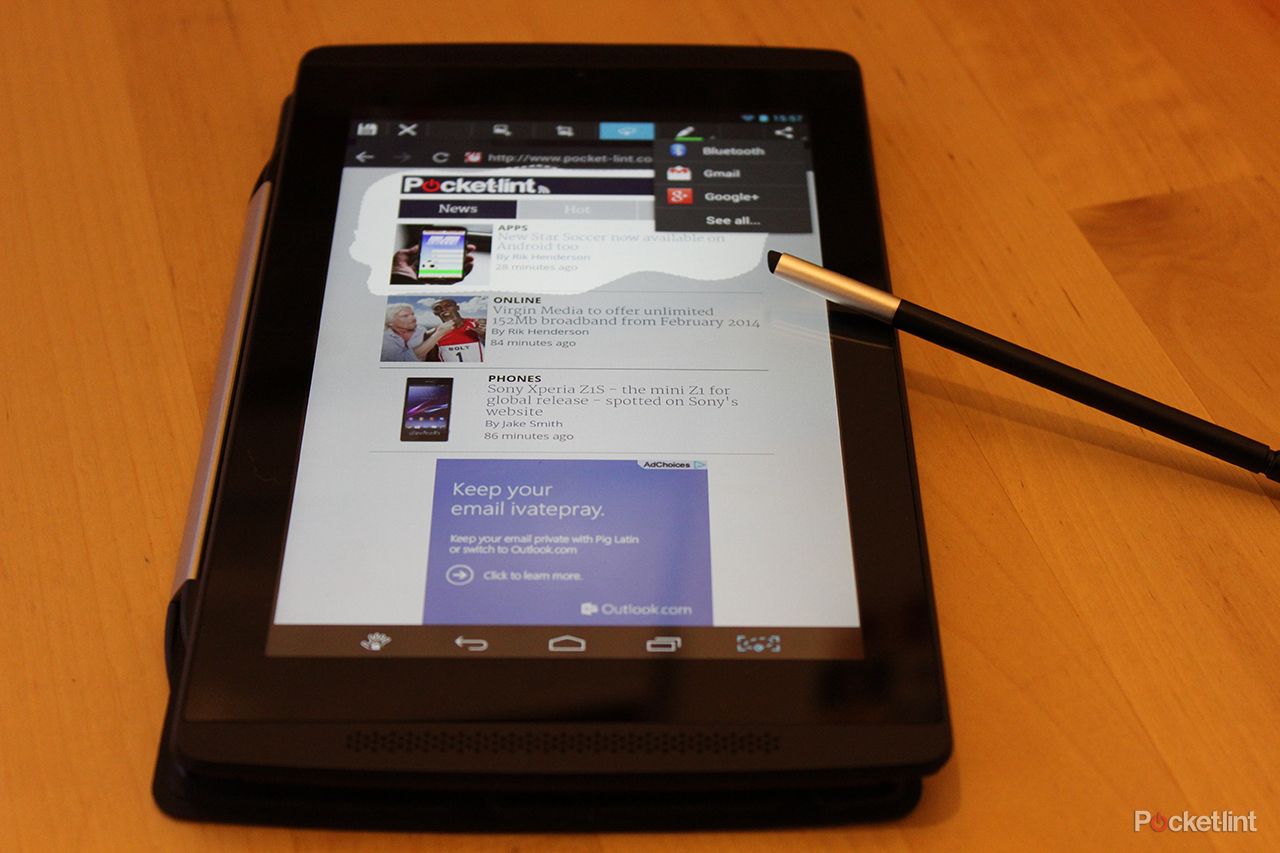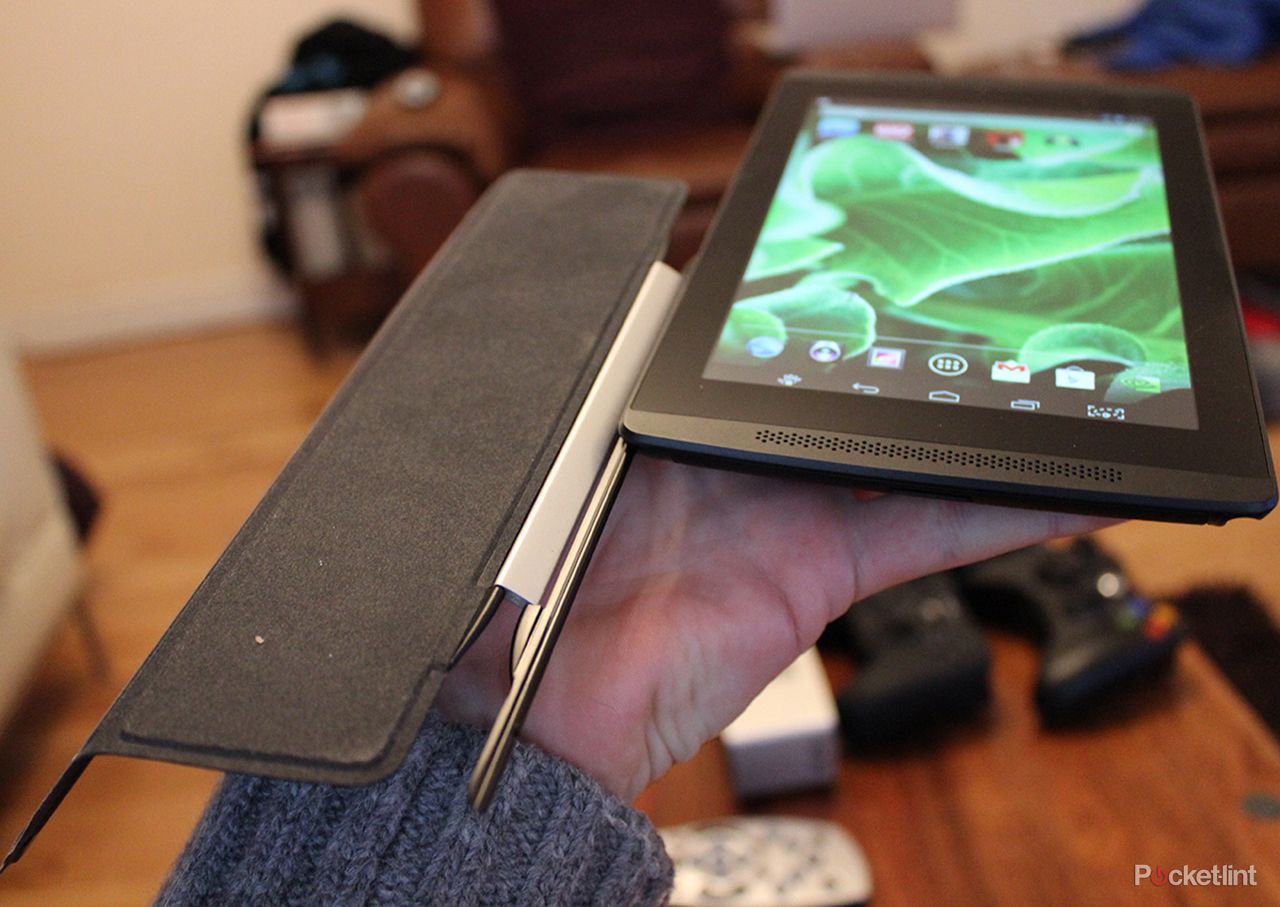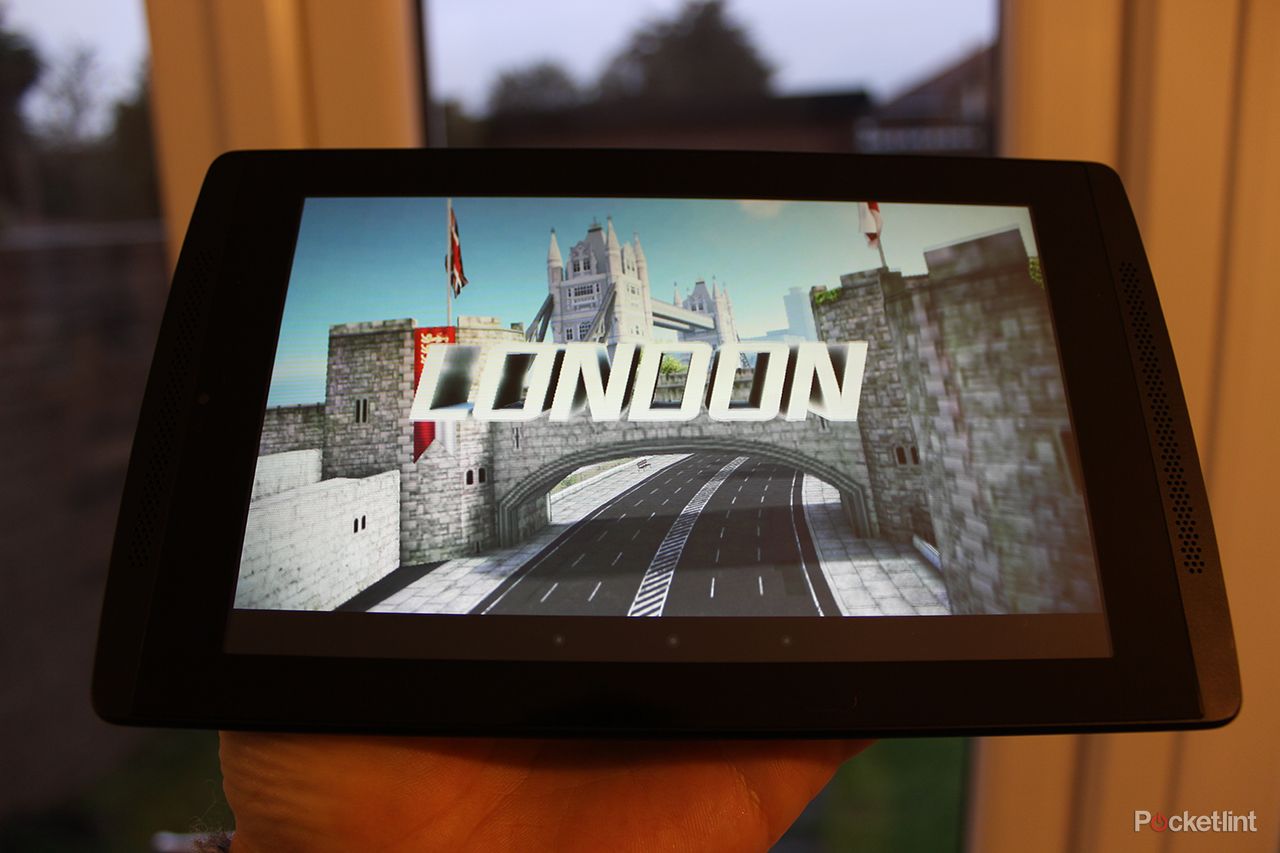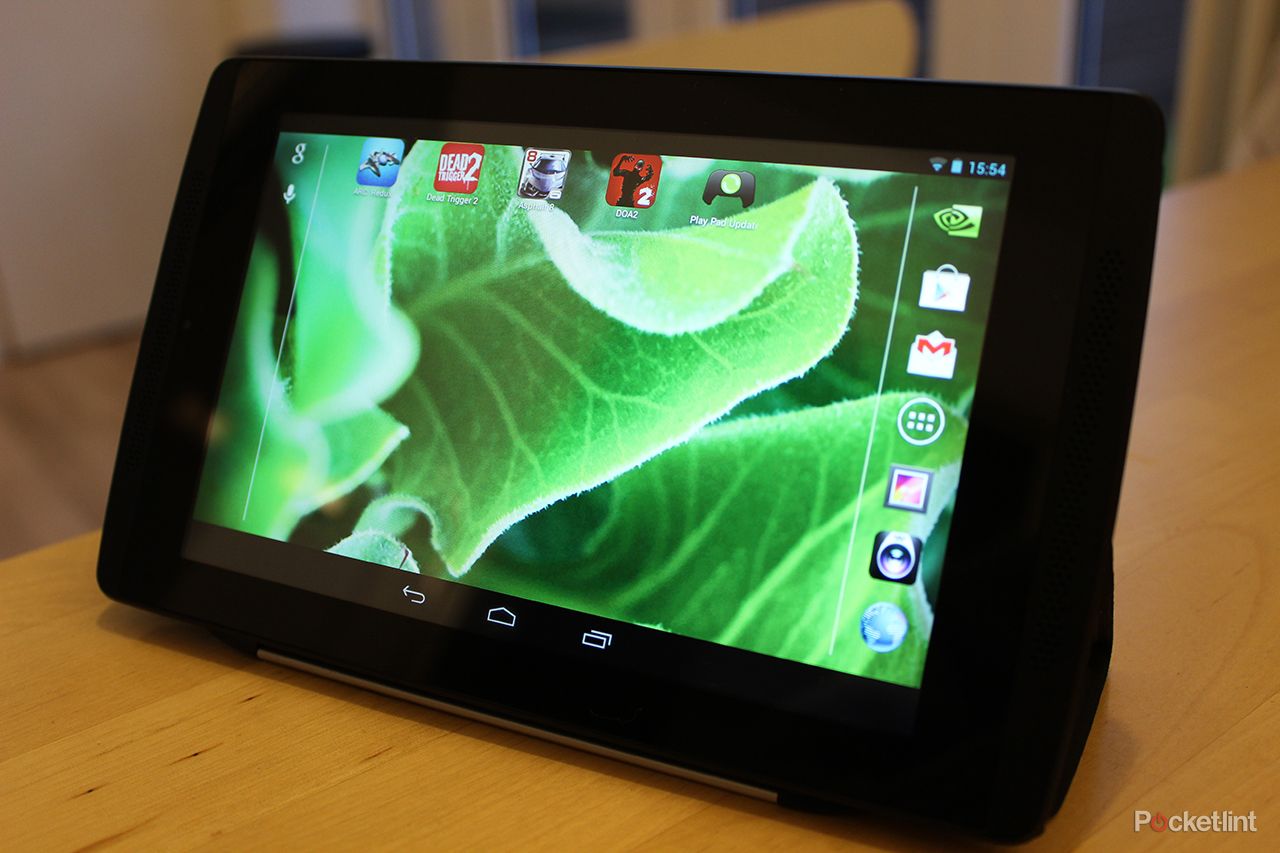If tablet quality improved with name length, the Advent Vega Tegra Note 7 would be unstoppable. But long names are not the source of power. This Currys and PC World exclusive slate made by Nvidia has the Google Nexus 7 and, kind of, the iPad mini Retina to contend with. Complete with the brand new Tegra 4 processor inside, an innovative stylus, impressive build and clever new magnetically adjustable flip cover we have to concede that maybe there is something to be said for a long name.
Our quick take
The Advent Vega Tegra Note 7 is one of the best affordable 7-inch tablets on the market, particularly if you're a gaming fan or like to use a stylus. If you haven't used a stylus the functionality of this one will have you addicted in no time. Leaving you wondering how you've lived without one.
There's little negative to throw at the Vega Tegra, but of all the specs it's the screen resolution that sticks out. It's not in the "Full HD" category, and while that's fine enough for gaming it won't match up to the panel on the similar-priced Nexus 7. But while that's among the biggest points against this device, we wouldn't describe anything about the Advent Vega Tegra Note 7 as bad - except, perhaps, for the bonkers-long name.
Gamers we'd advise buying a controller, but even without one you'll still be immersed in the stunning graphics that the Note 7 produces. It's very impressive stuff. Watch out 7-inch tablet market, there's a new kid on the block - and even if the specs don't all hands-down beat the competition on paper, there are features that stand out in their own right. In the week we've been using the device we've been taken in by it hook, line and sinker. A touch less weight, the latest Android OS and a higher resolution in version two and we'll have near perfection.
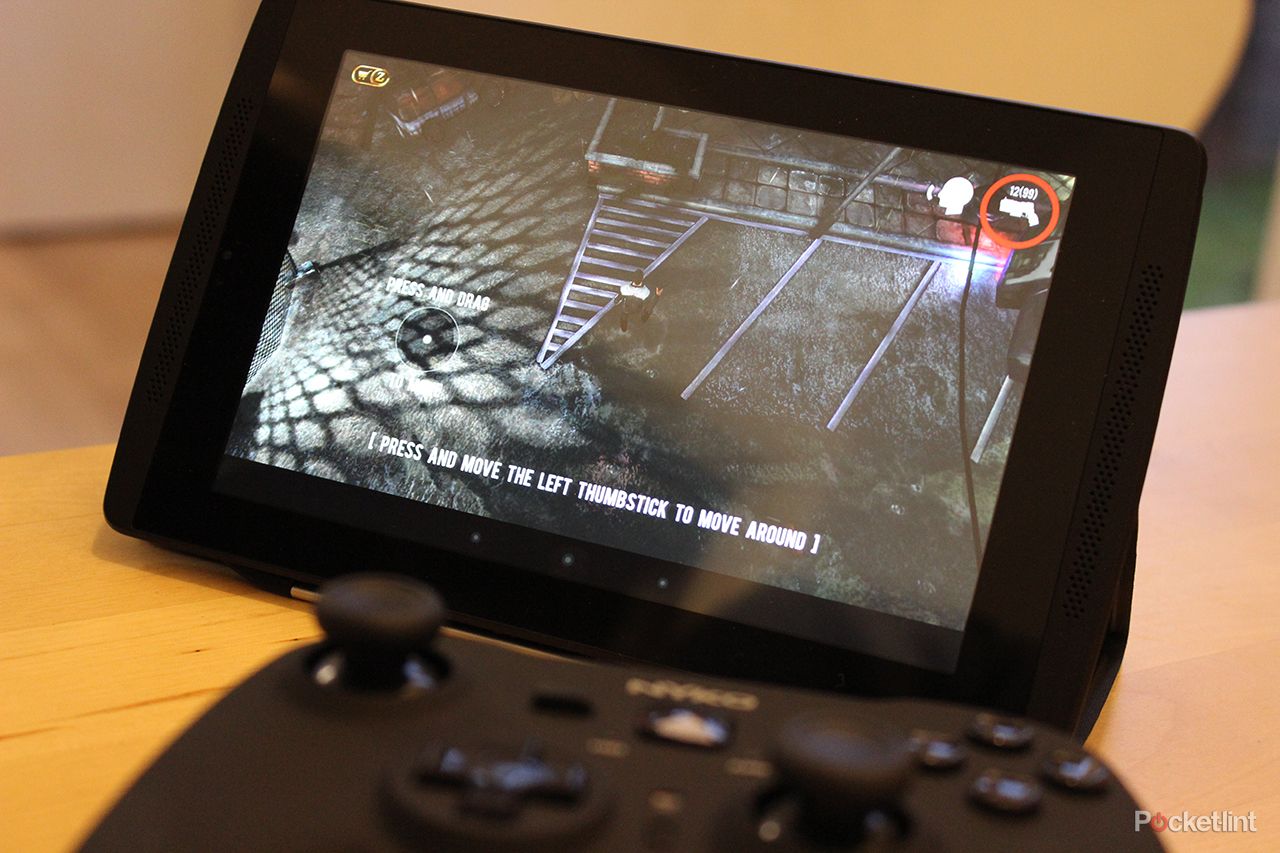
Advent Vega Tegra Note 7 - 4.0 / 5
| FOR | AGAINST |
|---|---|
|
|
Before going into detail, and to keep your interest in a tablet you might otherwise dismiss as "just another" budget 7-incher tablet, let's cut to the chase: this is a good, even brilliant tablet.
While the Vega's resolution is beaten by the Nexus 7, it manages to offer extras that the competition doesn’t, without a price hoik. The Nvidia Tegra 4 processor produces among the best graphics and smoothest gameplay we’ve seen on a tablet of this size. And the DirectStylus - the stylus pen included with the device - is genuinely fantastic. The one big question: should you buy the Tegra Note 7 over the competition? Let’s drill down into it.
Eye of the Tegra
The Advent Vega Tegra Note 7 was purpose-built by Nvidia as its first real outing into tablet hardware. And since the bulk of the company’s profits rely on huge investment into that Tegra 4 chip, Nvidia hasn’t cut corners with the tablet.
The Tegra 4 processor is special because it’s a quad-core offering with a fifth low-power core. That means it can utilise everything for gaming and video playback thanks to that 1.9GHz clock speed on those ARM Cortex A15 chips, but when on standby it’ll run background tasks using the 800MHz limited fifth-core - the same core that handles the passive stylus input to limit its impact on battery life.
Another crucial point to mention is that the processor has a 72 core GPU. Yup, count 'em, 72 cores. That translates to some of the best graphics we have ever seen on a tablet, and not just for the sake of numbers, but in the gaming world. From sun-glare to reflections on puddles, it’s really pushing to the level of PS3 graphics - on the Gameloft Tegra optimised titles at least.
We were shown how Nvidia’s Tegra 4 beat Qualcomm’s Snapdragon 800 processor when the company showed us head-to-head benchmarking tests. We usually take such things with a pinch of salt as they're designed to show a given device in its best light. But, no, we're genuinely impressed here. Given that GPU matters most when gaming - probably the most intense thing you’ll do on a tablet - that 1GB RAM in the Tegra Note 7 compares well to the 2GB in the Nexus 7. It seems to feel the same in use, even though it obviously isn't on paper.
READ: Nexus 7 (2013) review
We sat on a long train journey while testing the gaming capabilities of the Tegra Note 7. Never has a journey gone so quickly. Thanks to a design that makes it possible to angle the case into many possible usable angles, a Bluetooth wireless controller, and plenty of volume, we were utterly immersed. Asphalt 8 Airborne was the game of choice along with a bit of Dead Trigger 2. Both ran so smoothly we could have been playing on a console. And that surprised us, because we didn't expect it to be so good.
Another crucial point is that in Dead Trigger 2 there were no annoying glitches in controls - the sticks were sensitive to every little movement and lining up head shots, even when moving in diagonals, was easy when using an Nkyo Play Pad Pro.
DirectStylus: sign and return documents instantly
If you’re a fan of styli then you’ll love the passive, yet accurate, DirectStylus that comes with the Vega. And if you’re not a fan then it will make you realise why you should be. We were sent a document that needed signing. No need to print, sign and re-scan here - we just slapped our signature on using the stylus, then returned the updated document near instantly all while on the move. But the DirectStylus has more going for it than the competition, for example the active Samsung Galaxy Note 3 stylus.
Despite being passive the DirectStylus uses that fifth-core of the Tegra 4 to be able to map at 300 scans per second. That made for great accuracy - even when bobbing about on a train. But it also has a slanted head so that you can twist the stylus in your hand to go from thin to thick lines. This made it easier than other current stylus options which require you to select a different width every time you change. It has to be said here that it felt like there were pretty much two thicknesses though, either thick or thin with very little discernible in-between. But being able to flip the stylus and use the top end as a rubber is another stroke of genius. We like.
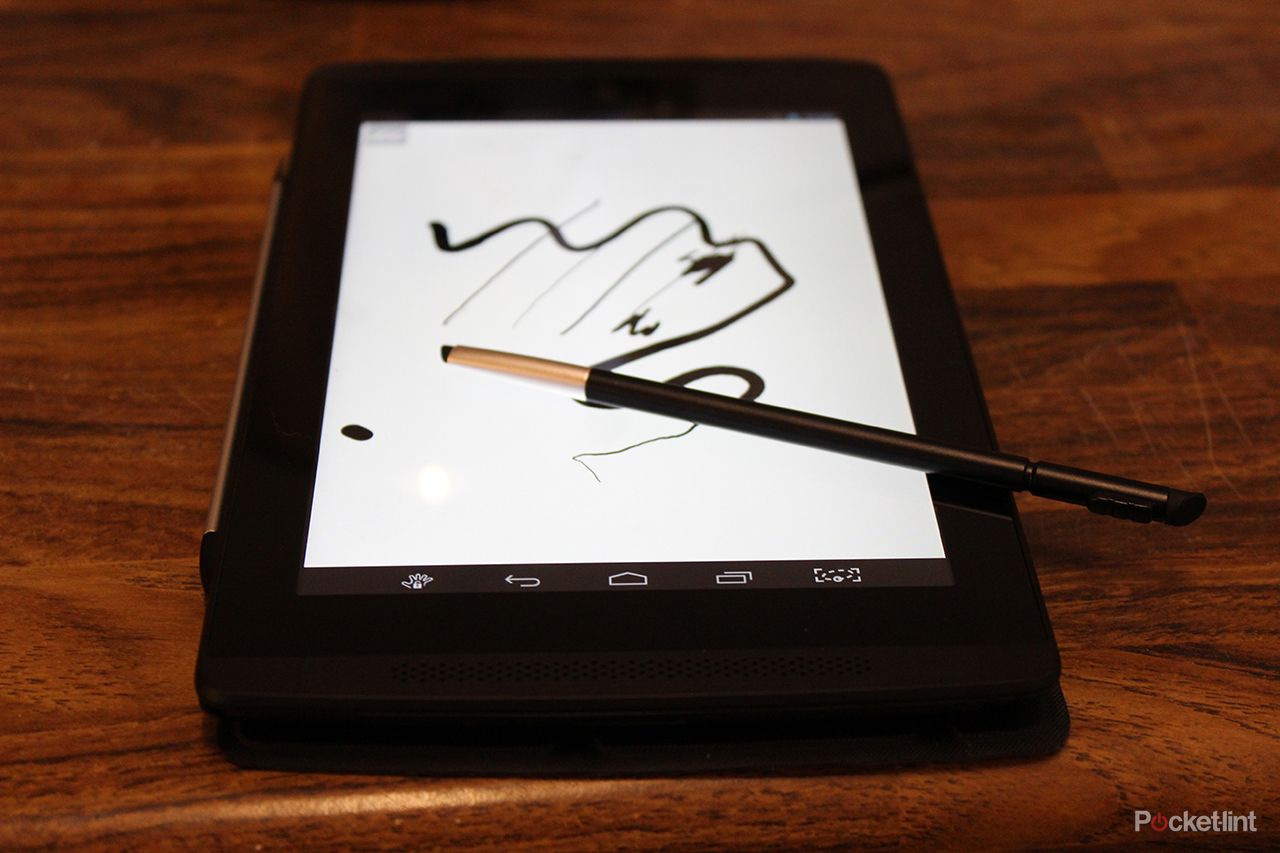
When you remove the DirectStylus you’re immediately met with all the apps ready to work with it, which you can select at a tap as well as adding more. Opening a document and writing or even dragging in pictures and editing is easy. And if you’re already browsing something, such as this very Pocket-lint review, you can tap the lasso icon which sits in the bottom screen menu - with home, back and multitask options - at all times, select a section to copy and immediately paste to edit or share that chunk. We did this a few times to make notes rather than typing out what we wanted - a really useful function that’s been perfected by adding the lasso icon permanently to the control bar.
The camera is better than the Nexus 7, front and back
While using a tablet as a camera when out and about should usually be an offence worthy of a fine, but it can also be useful to have a camera for some things. Especially when you can annotate pictures on the Tegra Note 7. So it’s worth addressing the fact that Nvidia has not only put a 5-megapixel camera in on the rear - that's Nexus 7 matching - but also has a 2-megapixel camera for super-clear video calls. And it’s gone further by taking advantage of that 72 core GPU and creating its very own HDR+ setting. We saw this in a demo but the final version won’t arrive for a week as it’s still getting perfected, but you’ll get it as part of an over-the-air update.
HDR+ is special because it’s always on, which has never been done before in a tablet. Traditionally HDR mode will take six to eight snaps at different exposure settings and then overlay them for a combined "balanced" single image. So if you’re shooting something dark by a bright window you will get a balance rather than a brighter window and black room. HDR+ is always measuring varying levels of light so you can see the balanced final version before you even hit the shutter button. Like we say, we've only seen it in a controlled demo, but are excited at the prospect of how good it could be - we'd love such a feature on our mobile phone.
The cover is the best we’ve used
The Tegra Note Slide Cover was designed from the ground up to make gaming as comfortable as possible. It slides into the side of the tablet so it locks in place then you just need to fold it round the back into a triangle to make a stand. But what makes it special is the magnet which slides up and down the back so you can adjust it to create the perfect viewing angle with three different options.
While using this case on the train even the jolting movements weren’t enough to dislodge the magnet. Adapting it to the perfect angle, even with the glare sitting by the window, meant the screen was really clear.
The only problem is the same with all of these cases: it can leave lines where the dust sits between the folds. Also the case doesn’t come with the tablet, it'll cost you a further £20, rounding the total price up to £200 - still Nexus 7 territory, though.
Screen could be better
The Tegra Note 7 is well built and measures 120 x 190 x 9.4mm, meaning it's slim enough to fit into the premium tablet category. It’s reassuringly weighty at 320g - although this can feel a little too much when reading from bed. It's hardly weight training stuff, it's just heavier than its nearest competitor. Also the original Nexus 7 was that weight in 2012, but the 2013 version slimmed down to 290g, plus it’s also thinner than the Tegra Note 7 at 8.65mm. Figures are one thing, but how much that truly impacts in use isn't drastic: we found the build to feel near perfect in the hand and find the tactile, "grippy" rear excellent in use.
The screen itself is a 7-inch IPS LCD with a 1280 x 800 pixel resolution - which means 215ppi. This could be better, as the aforementioned Nexus 7 delivers 1920 x 1200 (323ppi). Watching a 1080p movie might not look quite as good as it could but you’ll barely notice the difference at this scale, and for gaming the greater-than-720p resolution still provides plenty of detail to watch the super-smooth graphics play out.
The front-facing speakers are also excellent - they provide a loud and clear experience. While gaming with a controller the speakers are enough but once you grip the tablet some of them are covered by lingering thumbs and digits. We generally play with headphones most of the time as out-loud gaming in public is most annoying, so, for us, this wasn't an issue.
Pure Android
The operating system is brilliant with its pure Android 4.2.2 Jelly Bean offering. The only obvious extra Nvidia has integrated is the pop-up when you remove the DigitalStylus and the lasso icon at the bottom. That means a clean, easy to use and fast experience that we can't really fault. Well, unless you want Android 4.4 KitKat - but this will no doubt be coming (with 4.3 update coming before Christmas) as there is no skin to slow down the update.
One glitch we spotted was when trying to use a Bluetooth controller and Bluetooth headphones at the same time. Means you'll need a wire in there somewhere rather than using both wirelessly at the same time.
Then there's the battery life. It gave us a good 10 hours for watching HD video. But when gaming we managed about three hours before it threw in the towel - although that was constant, at highest brightness, loud volume, and while multitasking with Wi-Fi and Bluetooth on. In other words, it's pretty impressive all things considered.
To recap
One of the best affordable 7-inch tablets on the market, if you're a gaming fan and use a stylus you shouldn't be without it

